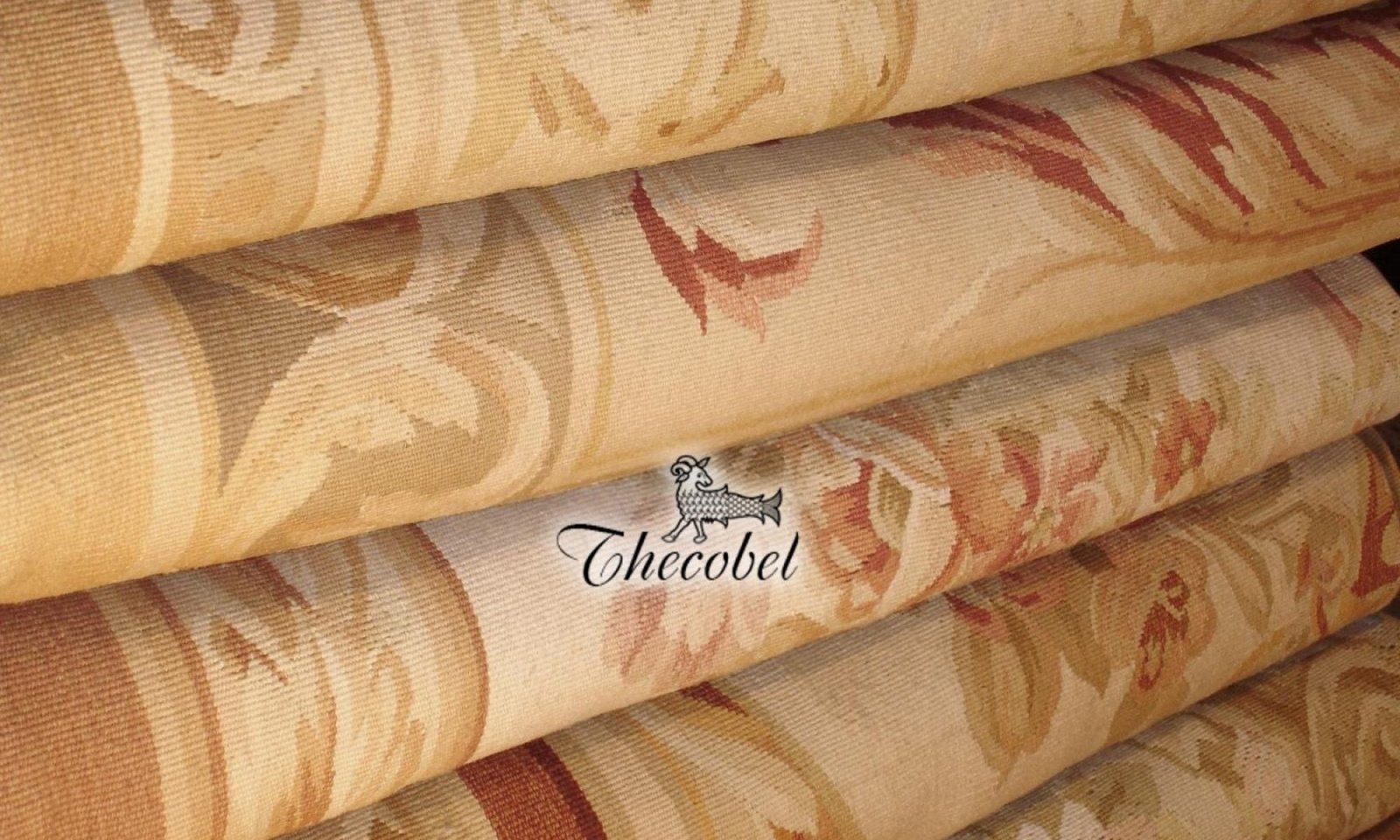Aubusson is a town in the French ‘département de la Creuse – Province du Limousin’.
The term ‘Aubusson’ carpets refers to the cities Aubusson and Felletin, both situated in the Creuse valley, which has been renowned for its wool based industry for centuries.
The oldest references to Aubusson (wall hanging) tapestry date back to the 15th century.
Flemish weavers, on the run for religious conflicts in Flanders, are believed to have settled in the area in the beginning of the 16th century.
They imported their weaving skills and were gradually influenced by the French style, thus preserving their famous weaving tradition.
King Henry IV issued an embargo on Flemish wall hanging tapestry in 1600, halting its successful entry into the French market.
In 1665, Colbert grants the Aubusson, workshops patents, giving them the title “Manufacture Royale”.
The city of Felletin was given the same title and privileges in 1689.
Around 1780, the traditional techniques used in horizontal weaving looms (métier de basse lisse) are being applied for producing flat woven floor tapestries.
The decorative style of the tapestries evolved with the contemporary fashion and political regimes: Louis XIV, Regency, Louis XV, Louis XVI, Directories, Empire, Restoration, Second Empire and so on into the 21st century.
As aesthetics and comfort gain increasing importance during the course of the 18th century, particularly among royalty, nobility and later on the bourgeoisie, Aubusson tapestries enjoy a similar popularity boost.
During that time, Louis XIV founds the “Manufacture de la Savonnerie”, near Paris in a former soap factory. It produces the so-called “Savonnerie” tapestry.
Eens die mode gelanceerd, worden omstreeks 1743, ook in Aubusson deze tapijten gemaakt op verticale getouwen (métier de haute lisse).
Aubusson followed this new evolution and started producing Savonnerie tapestries on vertical weaving looms (métier de haute lisse) in 1743.
Gradually, the term Aubusson became a synonym for the typical 18th century motifs, made in the golden age of Aubusson tapestries.
These designs have also found their way into a different technique, the so-called “Aubusson au Petit Point” or “Needlepoint” technique.
The wool is knitted in a half cross-stitch on a canvas or cotton rastered frame, a technique, which found its origin in the “Tapisseries à l’aiguille”.
This method was previously used for smaller decorative items made by upper class women. The name “Needlepoint” as such is a common term for knitted tapestries as this technique was quite popular in England at the end of the 18th and the beginning of the 19th century.
As early as at the end of the 19th century, a group of French manufacturers travelled to China with original templates or “cartons” in an attempt to revive the weaving industry in France, which was sinking to its deepest level in its history at the time.
The revival came during the antebellum, albeit for the modern designs, as the production of classical designs had already been moved to China.
The collection offers consists of historically correct reproductions of original Aubusson carpets. They are made in the traditional ‘gobelin’ weaving method. The antique Aubusson rugs are now only in museums or in private collections of several French castles.
The rediscovery of this unique decorative element in interior design can give 21st century living rooms the timeless, stylish and warm atmosphere.
